The Seattle SuperSonics were an NBA team based in Seattle from 1967 to 2008. They competed in the Western Conference, moving through the Western, Pacific, and Northwest divisions. In 2008, the team relocated to Oklahoma City, becoming the Oklahoma City Thunder, marking the end of the SuperSonics' presence in Seattle.
1965: Vertlieb and Richman consider their NBA aspirations
In 1965, security analyst Dick Vertlieb and script writer Don Richman consider running a professional franchise in the NBA, with a low entry fee of $1.75 million.
December 20, 1966: Seattle awarded NBA franchise
On December 20, 1966, Los Angeles businessmen Sam Schulman and Eugene V. Klein, along with minority partners, were awarded an NBA franchise for Seattle.
January 11, 1967: Team name SuperSonics chosen
On January 11, 1967, the name 'SuperSonics' was chosen for the Seattle NBA expansion team.
October 13, 1967: Seattle SuperSonics begin play
On October 13, 1967, the Seattle SuperSonics began play, coached by Al Bianchi, with players including Walt Hazzard, Bob Rule and Al Tucker.
1967: Sam Schulman becomes team owner
In 1967, Sam Schulman became the owner of the Seattle SuperSonics at its inception.
1967: SuperSonics Founded
In 1967, the Seattle SuperSonics were founded as an American professional basketball team based in Seattle.
1967: SuperSonics play at the Seattle Center Coliseum
In 1967, the SuperSonics began playing at the Seattle Center Coliseum.
1968: Hazzard Traded for Wilkens
Before the start of the next season in 1968, Walt Hazzard was traded to the Atlanta Hawks for Lenny Wilkens.
1969: Vertlieb and Richman leave
By 1969, Dick Vertlieb and Don Richman left Seattle, while Sam Schulman served as the active partner and head of team operations.
1969: Wilkens leads the NBA in assists
In 1969, Lenny Wilkens led the NBA in assists during the 1969–70 season.
June 1970: NBA owners vote to work toward a merger with the ABA
In June 1970, the NBA owners voted 13–4 to work toward a merger with the ABA.
1970: SuperSonics join Western Conference's Pacific division
In 1970, the Seattle SuperSonics became a member of the Western Conference's Pacific Division of the NBA.
March 3, 1972: SuperSonics lose eight of its final nine games
On March 3, 1972, the SuperSonics had a 46–27 mark but late-season injuries to starters Haywood, Dick Snyder and Don Smith led to the team losing eight of its final nine games.
1972: Wilkens traded to the Cleveland Cavaliers
For the 1972–73 season, Lenny Wilkens was traded to the Cleveland Cavaliers in an unpopular move.
1974: Bill Russell hired as head coach
In 1974, Bill Russell was hired as the head coach of the Seattle SuperSonics, leading them to their first playoff appearance.
1975: Homage to a similar style
The final SuperSonics uniforms were an homage to a similar style worn from the 1975–76 season through to the 1994–95 season.
1976: Russell leaves the SuperSonics
Bill Russell left the SuperSonics after the 1976–77 season, and the team started the season at 5–17 under new coach Bob Hopkins.
1976: Fred Brown selected to the NBA All-Star Game
In 1976, Fred Brown was selected to the NBA All-Star Game, during his fifth season with the SuperSonics.
1978: SuperSonics win Western Conference title and reach NBA Finals
In 1978, Lenny Wilkens returned as coach and the SuperSonics won the Western Conference title, leading the Washington Bullets three games to two before losing in seven games in the 1978 NBA Finals.
1978: SuperSonics move to the Kingdome
In 1978, the Seattle SuperSonics moved their home games to the Kingdome, sharing it with the Seattle Mariners (MLB) and Seattle Seahawks (NFL).
1978: SuperSonics win Western Conference title
In 1978, the Seattle SuperSonics won the Western Conference title.
1978: SuperSonics Leave Seattle Center Coliseum
In 1978, the SuperSonics left Seattle Center Coliseum.
1979: SuperSonics win NBA Championship
In 1979, the Seattle SuperSonics won the NBA championship, defeating the Washington Bullets.
1979: SuperSonics win their first and only NBA title
In 1979, the Seattle SuperSonics, with a roster including Gus Williams and Finals MVP Dennis Johnson, defeated the Washington Bullets in five games to win their first and only NBA title.
1979: SuperSonics finish second in the Pacific Division
In the 1979–80 season, the SuperSonics finished second in the Pacific Division to the Los Angeles Lakers with a strong 56–26 record.
1980: Johnson traded, Williams contract dispute
It was the last time the backcourt of Williams and Johnson played together on the SuperSonics; Dennis Johnson was traded to Phoenix Suns before the start of the 1980–81 season and Gus Williams missed the year due to a contract dispute.
1981: Williams returns
In 1981, Gus Williams returned for the 1981–82 season and the SuperSonics scored 52–30 and 48–34 records during the next two years.
1981: SuperSonics create the Sonics SuperChannel
In 1981, the Seattle SuperSonics created the Sonics SuperChannel, the first sports subscription cable service.
October 1983: Sam Schulman sells SuperSonics to Barry Ackerley
In October 1983, original team owner Sam Schulman sold the SuperSonics to Barry Ackerley.
1983: Barry Ackerley becomes team owner
In 1983, Barry Ackerley took ownership of the Seattle SuperSonics from Sam Schulman.
1984: Fred Brown retires
In 1984, Fred Brown retired after playing 13 productive seasons with the Seattle SuperSonics.
1984: Sonics SuperChannel shuts down
The Sonics SuperChannel was shut down after the 1984–85 season.
1985: SuperSonics return to the Seattle Center Coliseum
In 1985, the Seattle SuperSonics returned to the Seattle Center Coliseum for their home games.
1985: SuperSonics Return to Coliseum
In 1985, the SuperSonics returned to the Seattle Center Coliseum.
1985: Lenny Wilkens leaves
Lenny Wilkens left the organization following the 1984–85 season.
1986: SuperSonics post a 39-43 regular season record
During the 1986–87 season, the SuperSonics posted a 39-43 regular season record.
1986: Fred Brown's number retired
In 1986, Fred Brown's number was retired in recognition of his contributions to the Seattle SuperSonics.
1987: Chambers wins All-Star Game MVP; SuperSonics reach Western Conference Finals
In 1987, Tom Chambers won the All-Star Game MVP award, and the SuperSonics appeared in the Western Conference Finals despite a 39–43 regular season record during the 1986–87 season.
1988: Ellis, McDaniel, and Chambers each average over 20 points per game
In the 1987–88 season, Dale Ellis, Xavier McDaniel, and Tom Chambers each averaged over 20 points per game for the Seattle SuperSonics.
1989: Drafting of Shawn Kemp
In 1989, the SuperSonics began to set a new foundation by drafting forward Shawn Kemp. This marked the start of a new era for the team.
1989: SuperSonics qualify for the second round of playoffs
In the 1988–89 season, the Seattle SuperSonics finished with a 47–35 record and qualified for the second round of the 1989 playoffs.
1990: Drafting of Gary Payton and trades
In 1990, the SuperSonics drafted guard Gary Payton and traded Dale Ellis and Xavier McDaniel to other teams during the 1990–91 season, continuing to reshape the team's roster.
1992: George Karl's Arrival
In 1992, George Karl arrived as head coach of the SuperSonics, marking a return to regular season and playoff competitiveness for the team.
1993: Best Record in NBA
In the 1993–94 season, the SuperSonics had the best record in the NBA at 63–19.
1994: SuperSonics temporarily move to the Tacoma Dome
In 1994, the Seattle SuperSonics temporarily relocated to the Tacoma Dome for the 1994–95 season due to renovations at the Coliseum, which was renamed KeyArena.
1994: Playoff Loss to Denver Nuggets and Move to Tacoma Dome
In the 1993-94 season, despite having the best record in the NBA, the SuperSonics suffered a first round loss to the Denver Nuggets, becoming the first number one seed to lose a playoff series to an eighth seed. The Sonics moved to the Tacoma Dome for the 1994–95 season.
1994: Homage to a similar style
The final SuperSonics uniforms were an homage to a similar style worn from the 1975–76 season through to the 1994–95 season.
1995: SuperSonics Change Uniforms
In 1995, the SuperSonics changed their uniforms, adding red and orange and removing yellow. The new uniforms displayed the team's new logo on the front and their alternative logo on the shorts.
1995: KeyArena Opens
In 1995, the renovated Coliseum reopened as KeyArena, becoming the SuperSonics' main venue.
1995: Elimination by Lakers and Return to KeyArena
In the 1994-95 season, the SuperSonics were eliminated in the first round by the Los Angeles Lakers. The team returned to the rebuilt Coliseum, now the KeyArena, for the 1995–96 season.
1995: Strongest Roster and Franchise Record
The 1995–96 SuperSonics team achieved a franchise-best record of 64–18.
1996: SuperSonics win Western Conference title
In 1996, the Seattle SuperSonics won the Western Conference title.
1996: NBA Finals Loss to Chicago Bulls
In 1996, the SuperSonics reached the NBA Finals but lost to the Michael Jordan-led Chicago Bulls in six games.
1997: Pacific Division Title
In the 1996-97 season, Seattle won 57 games to secure their second straight Pacific Division title.
1998: Struggling Season
During the 1998–99 season, the SuperSonics struggled.
1998: Pacific Division Title, McMillan's Retirement, and Karl's Departure
In 1998, the SuperSonics won 61 games to secure their third straight Pacific Division title. Longtime Sonic Nate McMillan retired, and George Karl ended his tenure as head coach due to disagreements with management.
2000: Dismissal of Westphal
After the team started the 2000–01 season 6–9, Paul Westphal was dismissed as coach.
February 2001: Nate McMillan Appointed Head Coach
In February 2001, Nate McMillan was appointed permanent head coach of the SuperSonics.
2001: Howard Schultz Becomes Majority Owner
From 2001 to 2006, Starbucks chairman emeritus, former president and CEO Howard Schultz was the majority owner of the team.
2001: Basketball Club of Seattle takes ownership
In 2001, Basketball Club of Seattle, headed by Howard Schultz, acquired ownership of the Seattle SuperSonics.
2001: New SuperSonics Uniforms
In 2001, the Seattle SuperSonics introduced new uniforms designed by Hornall Anderson. They featured a white home jersey with green-and-gold trim and a dark green road jersey with white-and-gold accents.
2001: Vancouver Grizzlies Relocation
The Vancouver Grizzlies relocated to Memphis, Tennessee and were renamed the Memphis Grizzlies for the 2001-02 season.
2002: Trade of Gary Payton
In 2002, All-Star Gary Payton was traded to the Milwaukee Bucks, marking the end to the SuperSonics' 11-year run of seasons with a winning percentage of at least .500.
2002: Charlotte Hornets Relocation
The Charlotte Hornets relocated to New Orleans and began play as the New Orleans Hornets for the 2002-03 season.
2004: SuperSonics become a member of the Western Conference's Northwest division
In 2004, the Seattle SuperSonics became a member of the Western Conference's Northwest division of the NBA.
2004: Sixth Division Title
In the 2004–05 season, the team won its sixth division title.
2005: SuperSonics win their last divisional title
In 2005, the Seattle SuperSonics won their last divisional title in the Northwest Division.
2005: Playoff Loss and McMillan's Departure
In 2005, the SuperSonics lost in six games to the San Antonio Spurs in the Western Conference Semifinals. Head coach Nate McMillan left to coach the Portland Trail Blazers.
July 18, 2006: Sale of SuperSonics and Seattle Storm to Professional Basketball Club LLC
On July 18, 2006, Basketball Club of Seattle sold the SuperSonics and its WNBA sister franchise, the Seattle Storm, to Professional Basketball Club LLC, headed by Clay Bennett.
October 24, 2006: NBA Board of Governors approves sale of SuperSonics
On October 24, 2006, the NBA Board of Governors approved the sale of the Seattle SuperSonics to Professional Basketball Club LLC.
2006: Allegations of Intent to Move Team
In the months prior to the settlement, public email conversations within Bennett's ownership group suggested that some members wanted to move the team to Oklahoma City prior to the purchase in 2006.
May 22, 2007: Second Pick in NBA Draft
On May 22, 2007, the SuperSonics were awarded the second pick in the 2007 NBA draft, selecting Kevin Durant from the University of Texas.
2007: Low Morale, Durant's Arrival, and Poor Performance
In 2007, morale was low due to broken down arena talks. Kevin Durant was drafted, but the team performed poorly, losing their first eight games. Durant led all rookies in scoring and won the Rookie of the Year award.
2007: Other Statistics (regular season)
Other Statistics (regular season) (as of the end of the 2007–08 season)
2007: Points Scored (regular season)
Points scored (regular season) (as of the end of the 2007–08 season)
2007: 2007-08 Season
The Seattle SuperSonics played their final season in Seattle in 2007-08 before relocating.
2007: Final SuperSonics Uniforms
The uniforms introduced in 2001 were worn through to the 2007-08 season, marking the final SuperSonics uniforms before the team's relocation.
April 13, 2008: Last Home Game in Seattle
On April 13, 2008, the Seattle SuperSonics played their last home game, winning against the Dallas Mavericks. The crowd chanted "Save our Sonics".
April 18, 2008: NBA Owners Approve Relocation
On April 18, 2008, NBA owners approved a potential SuperSonics' relocation to Oklahoma City in a 28–2 vote. This approval meant the SuperSonics would be allowed to move to Oklahoma City's Ford Center for the 2008–09 season after reaching a settlement with the city of Seattle.
July 2, 2008: Settlement Reached Allowing Team to Move
On July 2, 2008, a settlement was reached that allowed the team to move to Oklahoma City. The agreement included a payment to Seattle and a promise not to use the "SuperSonics" name. The team's history would be shared between Oklahoma City and any future NBA team in Seattle.
2008: SuperSonics relocate to Oklahoma City
After the 2007-08 season ended, in 2008, the Seattle SuperSonics relocated to Oklahoma City, where it now plays as the Oklahoma City Thunder.
2008: Lawsuit Dropped by Schultz
In 2008, Schultz dropped his lawsuit seeking to rescind the sale of the team before the start of the 2008–09 season.
2008: SuperSonics Leave KeyArena
In 2008, the SuperSonics played their last season at KeyArena.
2009: Release of Sonicsgate Documentary
In 2009, Seattle filmmakers produced a documentary film titled "Sonicsgate – Requiem For A Team", which describes the rise and demise of the Seattle SuperSonics franchise.
2010: Lease Enforcement Lawsuit
After failing to persuade local governments to fund a $500-million arena complex, Bennett's group requested arbitration with the city of Seattle to be released from the SuperSonics' lease of KeyArena until 2010. Seattle sued Bennett's group to enforce the lease.
2010: Webby Award for Sonicsgate
In 2010, the film Sonicsgate won the Webby Award for Best Sports Film.
2011: Chris Hansen's Investment in Arena
In 2011, a group of investors led by Chris Hansen spoke with Seattle mayor Mike McGinn about investing in an arena in hopes of securing an NBA franchise and reviving the Seattle SuperSonics.
May 16, 2012: Proposed Memorandum of Understanding Presented
On May 16, 2012, McGinn, Constantine, and Hansen presented the proposed Memorandum of Understanding (MOU) to the public.
June 2012: Hansen's Investment Partners Revealed
In June 2012, it was revealed that Hansen's investment partners included Microsoft CEO Steve Ballmer, and brothers Erik and Peter Nordstrom of fashion retailer Nordstrom, Inc. Peter Nordstrom had been a minority owner of the SuperSonics under Howard Schultz's ownership. Wally Walker was also later revealed to be part of Hansen's group.
July 30, 2012: King County Council Approves MOU
On July 30, 2012, The King County Council voted to approve the MOU, adding amendments that provided for work with the Port of Seattle, securing the SuperSonics naming rights, offering reduced-price tickets, support for the Seattle Storm WNBA franchise, and requiring an economic analysis.
September 11, 2012: Tentative Agreement on Revised MOU
On September 11, 2012, Hansen and Seattle City Council announced a tentative agreement on a revised MOU that included the county council's amendments and new provisions.
September 24, 2012: Seattle City Council Approves Amended MOU
On September 24, 2012, By a vote of 7–2, Seattle City Council approved the amended MOU.
October 15, 2012: King County Council Approves Amended MOU
On October 15, 2012, The King County Council reviewed the amended MOU and voted unanimously in favor of approval.
January 9, 2013: Reports of Kings Sale and Relocation
On January 9, 2013, media reports emerged regarding the imminent sale of majority ownership of the Sacramento Kings to Hansen, Ballmer, the Nordstroms, and Walker for $500 million to relocate to Seattle as early as the 2013–14 NBA season.
January 20, 2013: Agreement to Sell Kings Stake to Hansen and Ballmer
On January 20, 2013, sources reported the Maloof family had agreed to sell Hansen and Ballmer's ownership group their 53% majority stake in the Kings franchise, pending approval of the NBA's Board of Governors.
February 6, 2013: NBA Commissioner confirms relocation request
On February 6, 2013, NBA Commissioner David Stern confirmed that the Maloofs had filed paperwork to officially request the relocation of the Kings from Sacramento to Seattle.
February 26, 2013: Sacramento City Council Negotiates with Investors
On February 26, 2013, the Sacramento City Council voted to negotiate with an investor group headed by Ron Burkle and Mark Mastrov to keep the Kings in Sacramento and construct a new arena.
April 3, 2013: NBA Owners' Finance and Relocation Committees Meeting
On April 3, 2013, the NBA owners' finance and relocation committees met in New York City. The Seattle and Sacramento groups each presented their proposals for the sale and relocation of the Kings.
April 29, 2013: Presentations to Relocation Committee
On April 29, 2013, both the Seattle and Sacramento groups made presentations to the full relocation committee, and the committee voted to recommend rejecting the relocation request.
May 17, 2013: Kings Ownership Stake Sold to Ranadive's Group
On May 17, 2013, the Maloof family and Hernreich formally agreed to sell their ownership stake in the Kings (65% of the team, valued at US$535 million) to Ranadivé's ownership group.
September 2013: Bucks Arena Concerns Raised
In September 2013, Deputy Commissioner Adam Silver announced that the Milwaukee Bucks needed to replace the aging BMO Harris Bradley Center due to its small size and lack of amenities.
2013: Potential Additional Payment to Seattle
By 2013, the ownership group could have been required to make an additional $30 million payment to Seattle if a new team had not been awarded to the city.
April 16, 2014: Sale of Milwaukee Bucks Announced
On April 16, 2014, Herb Kohl agreed to sell the Milwaukee Bucks to Marc Lasry and Wesley Edens for $550 million. The deal included contributions towards a new arena, which would eventually become the Fiserv Forum.
January 2, 2015: Report on Potential Sale of Atlanta Hawks
On January 2, 2015, the Atlanta Journal-Constitution reported that Atlanta Spirit, owners of the Atlanta Hawks, would sell the team.
June 24, 2015: Atlanta Hawks Sold to Tony Ressler's Group
On June 24, 2015, the Atlanta Hawks were sold to a group led by Tony Ressler, with the condition that the team would remain in Atlanta.
May 2, 2016: Seattle City Council Vote Against Street Vacation
On May 2, 2016, the Seattle City Council voted 5-4 against vacating a section of Occidental Avenue South, a setback for Hansen's arena plans.
October 25, 2016: Hansen Announces Private Funding for Arena
On October 25, 2016, Chris Hansen announced he would fund the arena without public funding.
November 14, 2016: Russell Wilson Invests in Arena Effort
On November 14, 2016, Seattle Seahawks quarterback Russell Wilson announced he would be investing in the NBA arena effort.
December 4, 2017: Seattle City Council Approves KeyArena Renovation
On December 4, 2017, the Seattle City Council voted 7-1 to approve the renovation of KeyArena.
2021: KeyArena Renovation Completed
By 2021, renovations of KeyArena, which was renamed Climate Pledge Arena, were completed by the beginning of the 2021-22 NBA and NHL seasons.
2022: "Rain City Showcase" Inaugural Game
Starting in 2022, the NBA has hosted a preseason game known as the "Rain City Showcase" at the renovated arena.
Mentioned in this timeline

Basketball is a team sport played on a rectangular court...
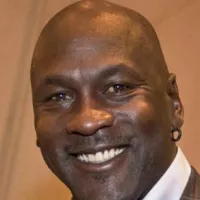
Michael Jordan often known as MJ is a businessman and...
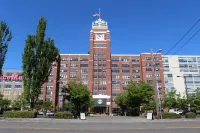
Starbucks is an American multinational coffeehouse chain established in Seattle...
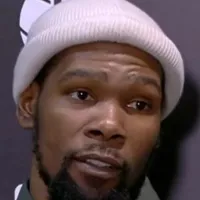
Kevin Durant or KD is a highly decorated American professional...

Bill Russell was a dominant American professional basketball player primarily...
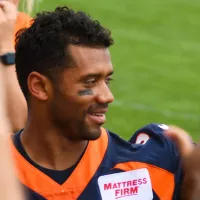
Russell Wilson is a professional American football quarterback currently playing...
Trending

1 month ago Upstart's Q3 Earnings: Mixed Results, Soft Q4 Guidance, and Stock Slides After Announcement.
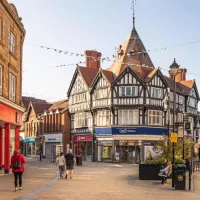
7 months ago Wrexham Targets Premier League Stars Amid Championship Push Transfer Rumors
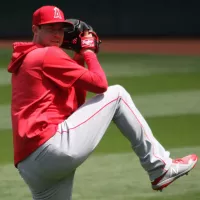
Tyler Skaggs was an American professional baseball pitcher who played seven seasons in MLB for the Arizona Diamondbacks and Los...
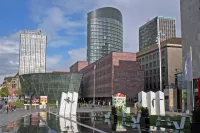
17 days ago Dortmund's Christmas Market Shines: World's Tallest Christmas Tree and Festive Celebrations
18 days ago Dominion Energy: AI Upside, Offshore Wind Progress, and a New 1-Year High.
1 month ago Ariana Grande, Cynthia Erivo, Idina Menzel, and Kristin Chenoweth Perform 'For Good'.
Popular

Candace Owens is an American conservative political commentator and author...

Tucker Carlson is an American conservative political commentator known for...

XXXTentacion born Jahseh Dwayne Ricardo Onfroy was a controversial yet...

Ilhan Omar is an American politician currently serving as the...

Kashyap Pramod Patel is an American lawyer who became the...
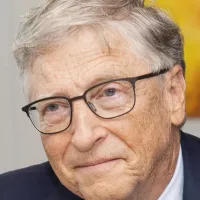
Bill Gates an American businessman and philanthropist revolutionized personal computing...